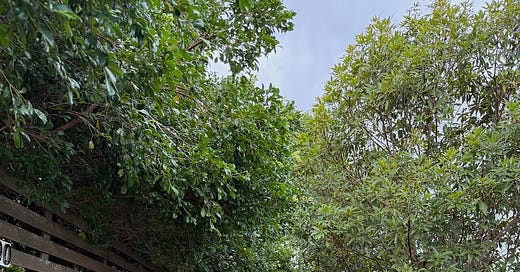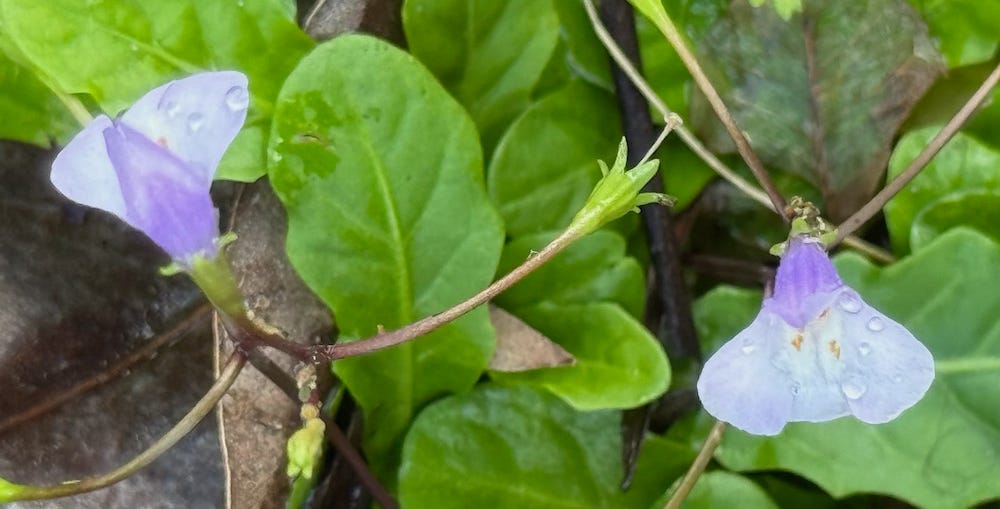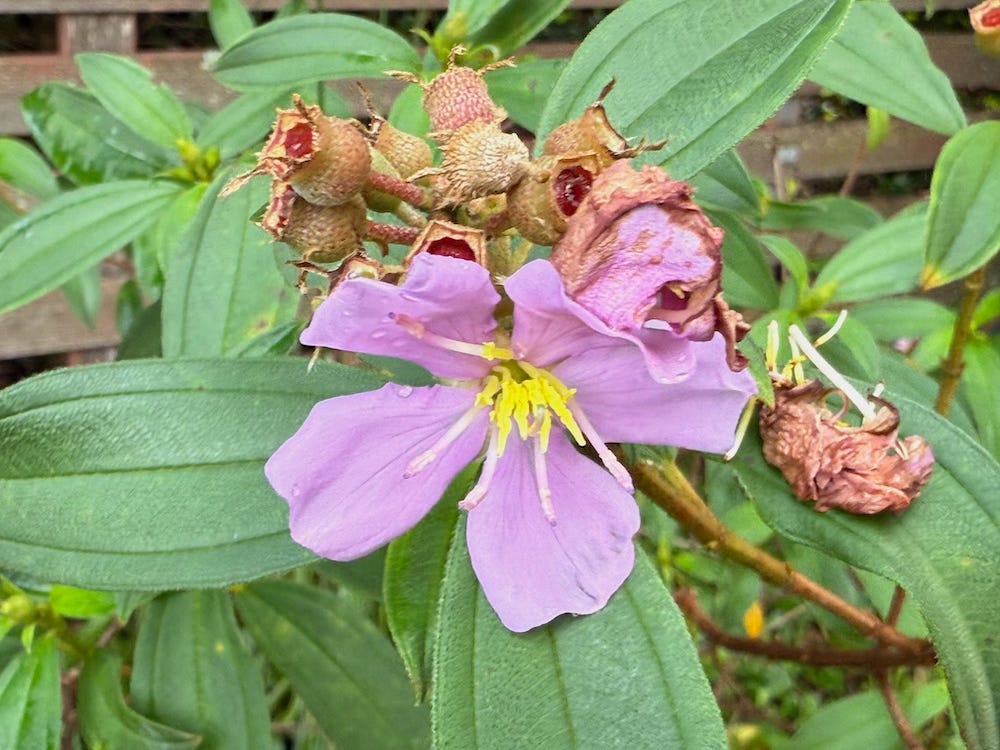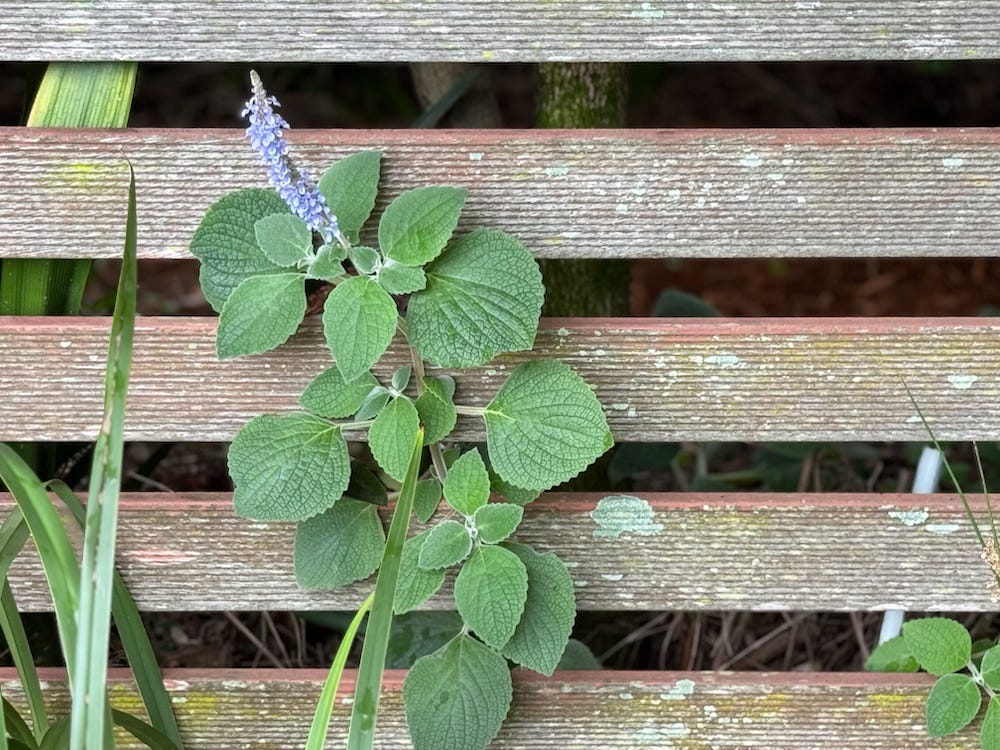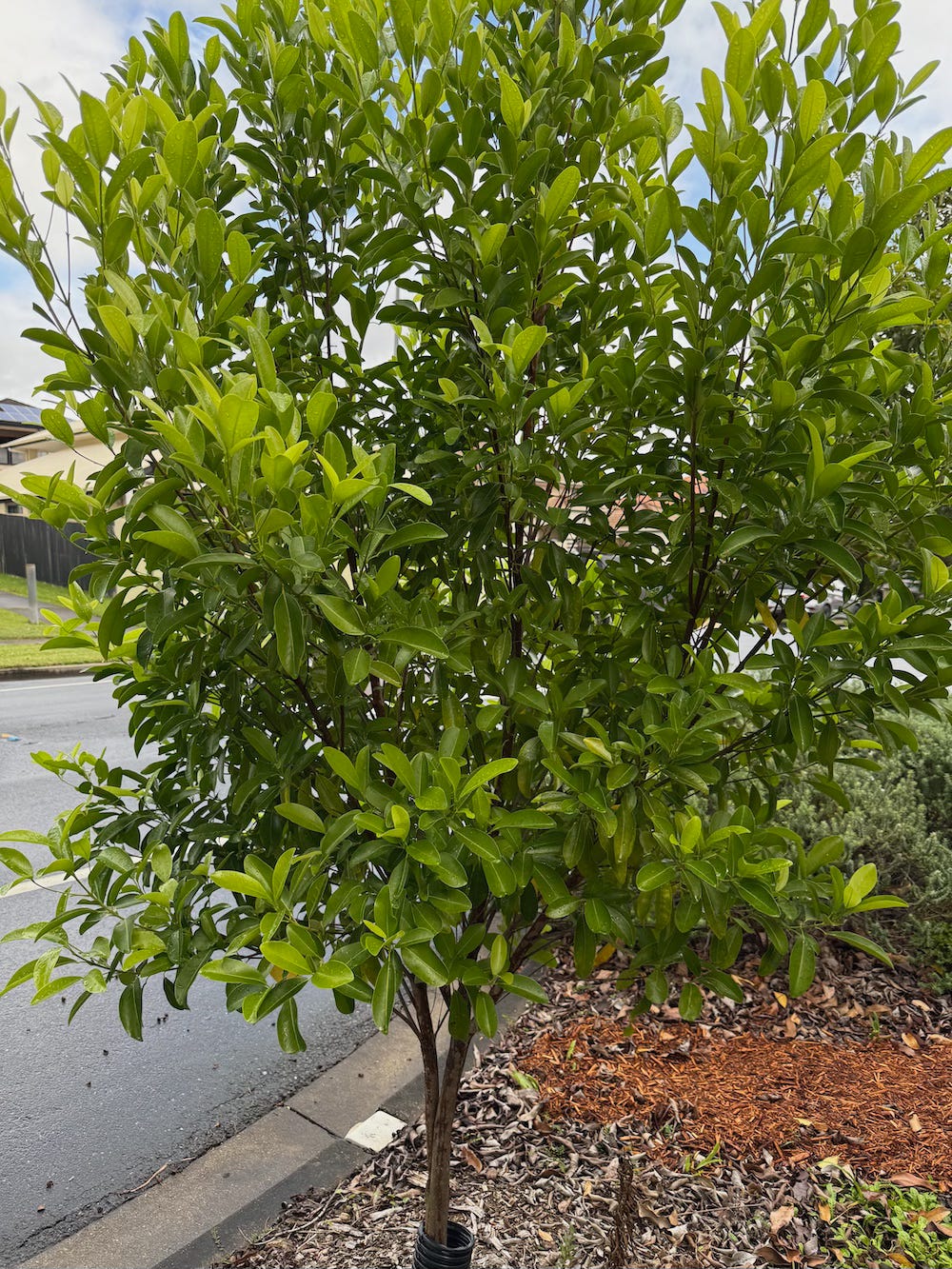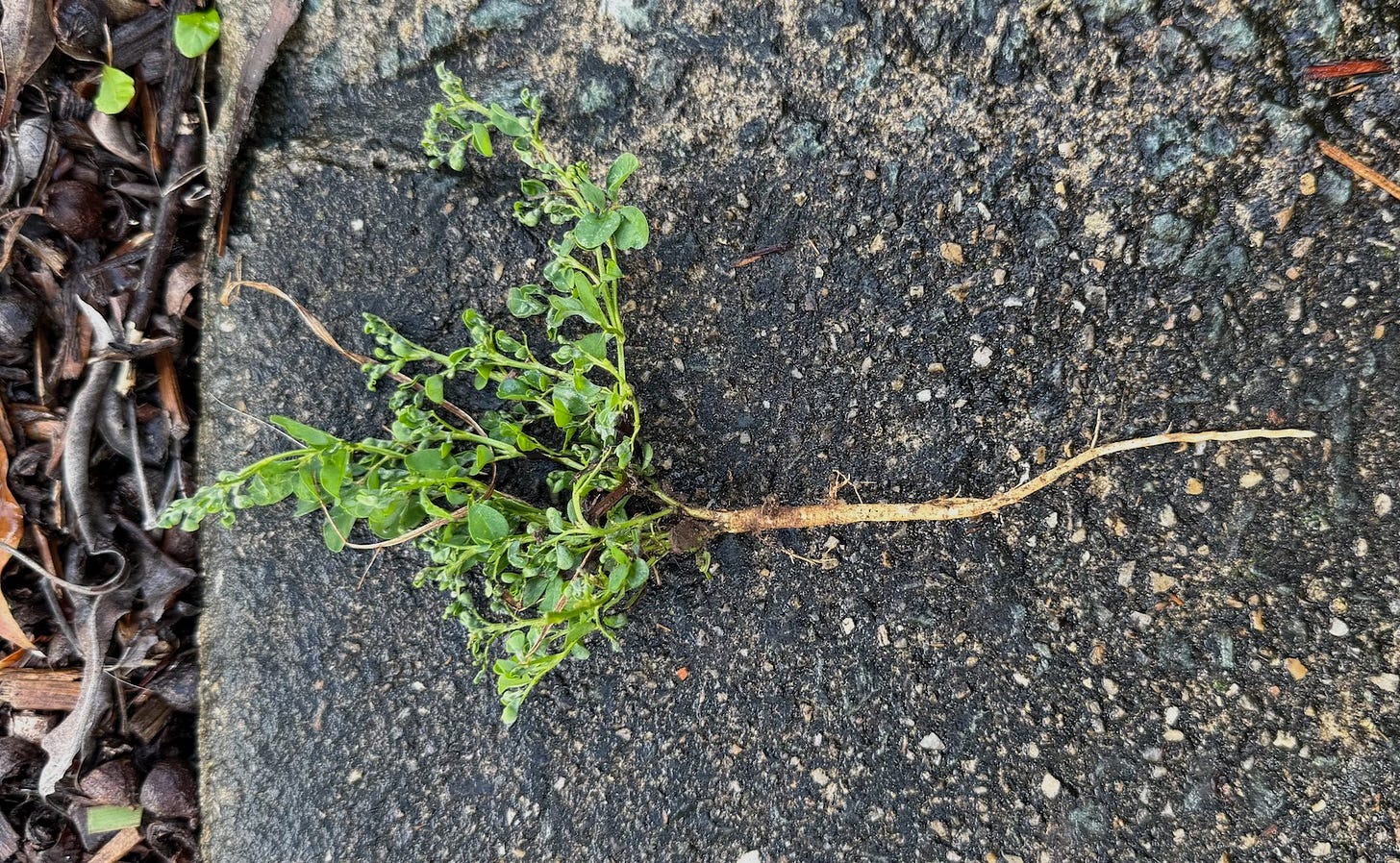Verge Garden Visit May 2025
Each month the local ACF group does a verge visit as part of their campaign to raise awareness of the need to protect biodiversity. This month it was my turn to host. Here are some photos.
As usual, we were so busy talking that I forgot to take photos so these were taken after everyone had gone. Conversations are a big part of verge gardening.
The main verge looking east. On the right you can see my tree and then the neighbour’s tree (both Lophostemon confertus) and the new tree in between recently planted by council. Postie path in the left foreground. This is very much a shady pedestrian pathway.
Notice all that flat-green. It isn’t grass. It’s an evolving mix of Mazus Pumilio, Viola Banksii and Dichondra repens. And yes, you can walk on it. It doesn't need mowing.
These are the tiny purple flowers of the Mazus. It’s suitable for wet, boggy places but I find it thrives in my heavy clay soil, especially in the shade. It can take over garden beds. All of this Mazus, and more on paths inside the garden, come from one tubestock plant from the local community nursery.
This is the local native, Melastoma malabathricum - not the exotic Tibouchina. You can tell by the number of veins on the leaves. It’s also a lot less vigorous than the import. Native bees love the flowers. It attracts the Miskin Jewell Butterfly. Apparently the purple pulp of the fruit stains your mouth which is why this bush tucker food is also called Blue Tongue. I’ve not tried it.
Plectranthus argentatus poking through the fence. Native bees love these flowers too. This is really hardy, propagates easily, responds well to chopping back.
This is the third tree, on the neighbour’s verge between the two bigger trees. Not sure what it is. When planted in the grass, it created an awkward mowing spot but the neighbours accepted my offer to extend the verge garden. There is a mulched path where people can walk through instead of grass and the tree is thriving. Wins all around. Cars can park here so that needs to be taken into account when planting.
On the verge you get weeds and there was a lot of this one when I started. The occasional one still pops up. Japanese knotweed? It has incredibly long, tough roots. As soil on the verge improves, I find the best control is to cut back to make sure it doesn’t flower while you wait for your chance. When the soil is just right after an extended rainy period, you can wiggle it enough to pull the whole thing out. Very satisfying!
It’s now 8 years since BCC planted this tree (see 2017), and it’s already a grand tree providing shade and habitat. Comparing it to the sad tree next door (same age and species but in grass) you can see the difference the verge garden makes. Every year, the difference between the trees gets bigger.
If we want cooler, tree-lined streets to reduce urban heat (and for the 2032 games), we need to plant now - with council street trees supported by residents’ verge gardens throughout the city. Those of us in council areas where there is already a policy could start the transformation now and have it finished before the summer heat arrives - trees can be added later. Have you started? Is anything stopping you?
This is the other end of the verge garden. On one side, Callistemon Little John with Mazus below, on the other, a traditional turfed verge. This is symbolic of the challenges we face with addressing biodiversity loss and climate change.
While some of us might look at grass verges and see barren, high-maintenance places that are hostile environments for street trees, others will see the same grass as well-maintained, neat, and desirable. And they would see my verge as messy, chaotic, and high-maintenance. These are competing worldviews that no amount of either side talking at people (aka raising awareness, education, advocacy) will change.
Right now, lawns and grass verges are the cultural norm. The lawn-loving worldview is created and reinforced by mainstream culture and vast industries including turf supplies, herbicides and pesticides, gardening equipment, garden maintenance businesses, real estate agents (lawns and beige walls) and property managers, and more.
That’s the purpose behind Shady Lanes. On the verge, we can all learn and practice the communication skills and collaborative practices needed to understand and work on complex problems with people who aren’t in our tribe.
The Shady Lanes guiding principles are designed to turn niche projects into mainstream change, especially for group projects. Understanding the Space will help all participants negotiate what can be a very contested space.
Let’s make green, shady, walkable streets for people and nature mainstream.

